Effect of drone flights on wild animals
26 July 2017 11:00pm
16 November 2017 5:02pm
Hi all
I would like to know your opinion about this footage:
https://vimeo.com/196847435
I fly drones in this place far away of birds for not disturbing them.
And then National Geographic fly a drone very close to birds to have an excellent footage.
You don't think that they are clearly disturbing them?
25 February 2021 9:45am
Hi!
Interesting subject indeed.
In most cases where UAVs are used in nature "documentaries" it is pretty obvious to a behavioural biologist that the animals were negatively affected.
I know that Sophie Gilbert collected bad examples of wildlife UAV harassment/disturbance at one stage.
Seeking part-time (33%) lecturer candidates at UC Berkeley
24 February 2021 10:38pm
Join the sixth annual #Tech4Wildlife Photo Challenge!
24 February 2021 12:00am
Journal of Vertebrate Biology - Conservation Canine Papers
20 February 2021 9:53pm
Wireless Camera for Live Viewing
23 December 2020 11:53pm
20 February 2021 3:04am
Look forward to playing with it when mine arrives I have a sd card arduino module also not finding much documentation on how to hook it up so was going to play with a server and see what I can do with it and photos
20 February 2021 4:06am
Nice! I'm building an esp32-cam with a Pi Zero server and I have the photos sending to it now. The last step is to build a housing for it and get it outside to capture some photos of the bears coming out of hibernation. Should be fun! I'm hoping to download photos from the camera over 1km away from my house, while sipping tea haha.
20 February 2021 5:31am
I have a raspberry pi3 setup now as a video streaming server so I can keep a eye on my home while I am at work
Seeking feedback: draft principles for responsible use of conservation surveillance technology
4 June 2020 6:38pm
25 November 2020 5:08pm
Hi Kate, Apologies for the delay responding. We submitted this work to Conservation Science and Practice on July 12 and we are currently working on the revisions. We hope it will be out soon. Stay well!
17 February 2021 11:59pm
Hi Doug - What's the status of this paper? I have anothe rproject looking at conservation AI principles and would like to point ot this paper, if it's out. - Kate
18 February 2021 7:54pm
Hi Kate- it should be out imminently and we'll announce it here when it is. Meantime I'll email you a copy. cheers, Doug.
Data standards: How can WILDLABS support?
21 January 2021 10:14am
12 February 2021 6:09pm
As someone who has practiced in information technology standards groups and actively worked on data schema standards to facilitate data sharing and even legally valid business transactions (https://www.oasis-open.org/committees/download.php/31222/ENML-1.0-Specification.pdf), my experience indicates it is important that you do the following:
1) Create a small workgroup of the right stakeholders who are committed to the process and results;
2) Pick a schema definition language - JSON or XML - to create the standard (JSON is the flavor of the day, but it is possible to do both with the right commitment);
3) Get people trained on the methodology and grammar for creating the schema;
4) Build the right semantic model up to a level of detail that is feasible for implementation within one year - if you go deeper than that the people who need to get things done in the field will move on while the workgroup will still be arguing details;
5) Build the schema; and
6) Build at least reference tools and applications in at least 2 different programming languages that show the model and schema working.
Without this process, it will be easy to miss the forest by getting lost in the trees (apologies for that).
Arshad
18 February 2021 12:04am
I don't know that it would be possible to create one scheme across all fields and collection tools. I'm involved in a project trying to define shared data standards with 10 private companies in one sector and that's a multi-year discussion. KDEs for seafood traceability (not even a full schema) took 5 years. If by standards you mean general agreements in principles, then maybe working with the ODI would be a good approach (see the work they did on engineering). if you want to get to schemas, maybe check with Matt Jones at NCEAS, bc data science for ecology is his career's work.
18 February 2021 1:05am
Hi skatewing,
I'm not a domain expert like most people in this forum, but I have created XML schemas using object oriented (OO) principles in the past; the same capability exists with JSON schemas.
The important thing is to create a heirarchy of schemas, starting with a generalized schema definition that applies to all participants at the upper layer, and inherit that schema as one starts diving deeper. This permits specialized schemas at lower layers that meets the needs of smaller groups, but as one moves up the schema hierarchy, one finds common parent objects that can be shared with other groups.
If it is impossible to create it in a hierarchy for all group participants, it is possible to start with a smaller general schema that meets everyone's needs and then each specialized group can create independent hierarchies, which can then be linked as necessary (https://json-schema.org/learn/getting-started-step-by-step.html#references)
This capability of inheriting parent schemas, and linking to external schemas, allows simultaneous - yet separate - development by many groups without having to involve everyone all the time. You do need to bring together many people for a short while for the more general parts of the schema at higher levels; but once defined, it can segment out to smaller groups as specialized schema branches/hierarchies are defined.
Arshad
New Group Manager - Introduction
16 January 2021 11:04pm
12 February 2021 7:17pm
Thank you for taking this on.
My particular interests are using local dogs trained by local people for scat detection (broadly defined), and how to evaluate and certify their performance. Local dog Toffee indicating on a training target;

12 February 2021 8:27pm
Thank you!
i know several organizations, including my own, that believe a valuable approach is local dogs and people supporting conservation in their own community is the best answer. Supported, where needed, by professional trainers/instructors to get them to a point they can be operational.
Great photo!
18 February 2021 12:12am
If and when you're ready to get a ton of attention (and maybe fundraise) for your conservation dog work send those pix to @dog_rates as I'm sure Matt would love to feature your pups.
O-FISH (Officer's Fisheries Information Sharing Hub)
9 February 2021 1:42am
18 February 2021 12:01am
Hi Karima - Are you looking for volunteers in specific regions or fisheries?
WWF: Protecting Ferrets with Drones and Vaccines
 Kristy Bly
Kristy Bly
17 February 2021 12:00am
Tech Tutors: How do I strategically allocate drones for conservation?
16 February 2021 1:01pm
Alba: A Wildlife Adventure
12 January 2021 3:46pm
1 February 2021 11:41am
We've had our eye on this too. Glad you can confirm its a good experience. I'll definitely give it a go.
15 February 2021 8:34pm
@itsravenous I saw this too! It's on my to-buy list so I can see what they've done. It looks like a really nice game, very engaging :D
Tech Tutors: How do I get started with LoRa? Connectivity in conservation
11 February 2021 2:59pm
12 February 2021 7:31pm
Thank you, Sean.
Google has found the LoRa - equipped cheetahs, and I will follow that up.
14 February 2021 7:55am
Hi all, good to see more interest for LoRaWAN in conservation. Smart Parks is a not-for-profit organisation that has been promoting, building and supporting LoRaWAN solutions for conservation for at least 6 years now. Part of this is our OpenCollar innitiative, to develop and share an open-source animal tracking solution. Many of you have already supported this innitiative, and the movement is growing fast! We have come very far with the most advanced trackers and collars of all sizes (rhino, pangolin, cheetah, lion, wisent, elephant). A great example is our recent ElephantEdge campaign with Hackster.io. We are are providing this technology as affordable as we can so more wildlife can be protected. Check us out at: www.smartparks.org and www.opencollar.io
14 February 2021 8:04am
That's us (www.smartparks.org) Peter. Happy to help.
Transparency, AI, and Machine Learning Conservation Impacts
3 February 2021 10:12pm
5 February 2021 2:21pm
Hello,
Just spit-balling some ideas, but you might check out WildMe/WildBook, Widlife Insights, the ICARUS/Movebank project, Arbimon, Norway's new imaging initiative (https://www.planet.com/nicfi/), Hack the Poacher, Vulcan's EarthRanger, SmartParks, the SMART app/platform, the TEAM camera trap network?
Not sure if any of this is what you're looking for but just some things that came to mind!
13 February 2021 12:14am
Thanks Carly,
These are great ideas. The movebank recommendation reminds me of some work from Save the Elephants that used its transparency to exonerate an elephant that had been accused of eating up some crops. I didn't know about Hack the Poacher - I'll check that out. I'm familiar with the others, but will dig deeper to understand the transparency angle. I work on Wildlife Insights, so know that one well. TEAM has essentially morphed into Wildlife Insights as I understand things.
Thanks again!
Best,
Thau
Sound library for small terrestrial mammals
31 January 2021 1:42pm
12 February 2021 6:05pm
Stuart, that is really cool! Are these clips translated into audible frequency range?
12 February 2021 8:26pm
Hi Phil, the playable spectrograms have been translated into the audible frequency range (by playing in 10 x time expansion), becuase the small mammal calls are mainly above our hearing range, but a copy of the original wav files can be downloaded from the web site.
12 February 2021 9:15pm
Ah, perfect. I was wondering why I never hear those calls!
That's really nice work, thanks so much for sharing!
Windows explorer video thumbnails
26 September 2019 9:31am
12 February 2021 7:10pm
This works very well, and can remove the movie strip icons from the edges of the thumbnails, which obscure animals just coming into the frame. https://icaros.en.softonic.com/
Using a Wildlife Detector Dog for Locating Eastern Indigo Snakes
12 February 2021 2:26pm
New Paper: Drones and Bornean Orangutan Distribution
 Sol Milne
Sol Milne
12 February 2021 12:00am
WildTrack Women in Science Day, 11 February 2021
11 February 2021 1:48pm
Consulting Opportunity: Product Manager - Supply Chain Traceability
11 February 2021 4:34am
News: FieldKit Presales and WSJ Feature
 FieldKit
FieldKit
11 February 2021 12:00am
Module 4: Tying It All Together
 Akiba
Akiba
11 February 2021 12:00am
Who’s who - Introduce yourself!
7 December 2018 4:42pm
5 September 2019 7:54pm
Welcome to the group, @divyar ! Can you please tell us a little more about yourself and your interests in this thread? Thanks!
9 January 2020 7:41pm
Hi all! I hope everyon had a restful break. We have a couple new members to the group! @dalenerusso and @ediminin can you please introduce yourselves here?
9 February 2021 1:57am
Hello All,
My name is Karima Cherif and I work for WildAid Marine and our focus is to end wildlife trafficking in our lifetime. I specialize in marine electronics and work in Gabon, Galapagos, Tanzania, and the Bahamas. In Gabon, we have many small scale fishing canoes that transport illegal bush meat such as pangolin and shark fin. Especially, with COVID the trafficking is increasing as people are becoming more despair to feed their families and cover their basic expenses. I append an article from NBC that discussing a new app that we developed in 2020 called O-Fish (Officer's Fisheries Information Sharing Hub). It is free and we invite MPA managers and agencies to try it.
Intro to Embedded Machine Learning on Coursera
 Edge Impulse
Edge Impulse
9 February 2021 12:00am
How do I strategically allocate drones for conservation?
8 February 2021 12:00am
Funding Opportunities: Panthera Grants and Fellowships
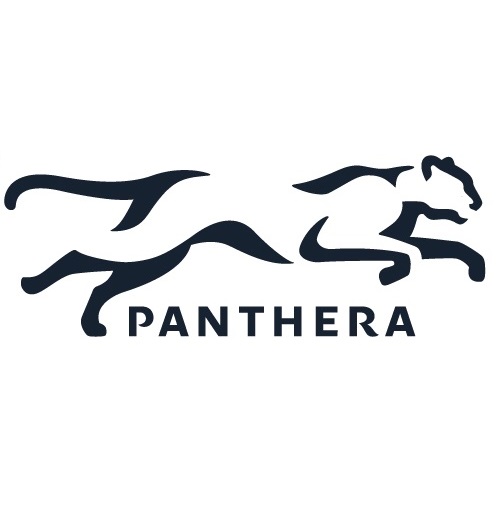 Panthera
Panthera
8 February 2021 12:00am
Rogue Detection Dogs Webinar - Free
7 February 2021 5:25pm
Tech Tutors: How do How do I launch machine learning projects using MLOps?
3 February 2021 12:08pm
5 February 2021 7:16pm
Dan's comments about the need for technologists and conservationists to manage and share (properly annotated) data struck a chord with me, it was right at the end of the presentation.
I fired off a point into the chat "could your old background data be my background data?" or something similar, and it got me thinking...
(Firstly, sorry for clouding this issue with my simultaneous "Ian Tuna" joke)
In the context of using AI as described in EdgeImpulse example, lets say - audio.
Lets say Group A are trying to detect the roar of lions, and Group B are trying to detect the grunt of wild pigs, and lets imagine that is in roughly the same area of Africa. I mean they could both send out teams to capture the sound of their target animal, and the sound of NOT their target animal, e.g everything else.
Well if "serengetti sounds" was a known audio track, then all you need is the unique sound of the beast in question, am I right?
WildLogger Add-On Board Requests
4 February 2021 2:10pm
5 February 2021 6:28am
Hi Akiba,
Yes, the TSL2591 has an interrupt pin and there are also a couple of example applications in the Adafruit and TSL2591MI libraries. I am doing tests making the connections with Dupont cables in the I2C connector of the Wildlogger, and for the interruption I will use the corresponding pin of the PIR connector
The connections do not concern me since, once the prototype has been tested and defined, my idea would be to make the maximum of welded connections to avoid failures
I'm still in the design phase, I already have the hardware quite defined, and now I have to enter with the most difficult part, the software, which for me is where I have the most difficulty
I have been gathering the elements to prepare the cake, and now is the time to enter the kitchen, I will not deny that I am excited and terrified at the same time
I'm already telling you ...
Regards !
5 February 2021 9:05am
Hi JAL.
Excellent! I'm glad you've already started on it and Dupont wires should be no problem. Let us know how it goes and if you have software issues, feel free to post them in this forum. Good luck and please take pictures of the modified Wildlogger and also the deployment. It sounds like an amazing application!
Akiba
5 February 2021 12:35pm
I appreciate your encouragement !
Don't hesitate that I will keep you informed of the progress that I am making
Happy weekend !
Seeking interviewees - AI in Conservation & nonprofits
9 December 2020 6:20am
16 January 2021 7:13am
Hi @Alex.L , I would suggest the same as for @mattzig at https://www.wildlabs.net/community/thread/1046#post-4348 :
I could try to connect you with some of the people and orgs we have worked with. If you go through https://www.vizzuality.com/project/ and identify the projects you would like to be look into, I can then try to connect you with the best person for each project.
And I would be very interested in learning more about your research group's work, besides your current research question, if possible!
Happy New Year! Luisa
28 January 2021 6:40am
HI Luisa,
Thank you so much for your help! I will definitely take a look at your organisation project list. I will be messaging you directly shortly. I would be glad to discuss my research group if it interest you.
Best,
Alex
4 February 2021 3:48pm
Hi Alex, that sounds great! Feel free to email me at [email protected], that may be simpler.

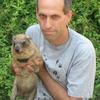
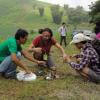


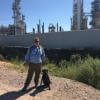
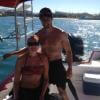

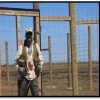








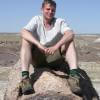


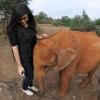




19 September 2017 3:22pm
This recent systematic review might be of interest: 'Unmanned aircraft systems as a new source of disturbance for wildlife: A systematic review'
Abstract
The use of small Unmanned Aircraft Systems (UAS; also known as “drones”) for professional and personal-leisure use is increasing enormously. UAS operate at low altitudes (<500 m) and in any terrain, thus they are susceptible to interact with local fauna, generating a new type of anthropogenic disturbance that has not been systematically evaluated. To address this gap, we performed a review of the existent literature about animals’ responses to UAS flights and conducted a pooled analysis of the data to determine the probability and intensity of the disturbance, and to identify the factors influencing animals’ reactions towards the small aircraft. We found that wildlife reactions depended on both the UAS attributes (flight pattern, engine type and size of aircraft) and the characteristics of animals themselves (type of animal, life-history stage and level of aggregation). Target-oriented flight patterns, larger UAS sizes, and fuel-powered (noisier) engines evoked the strongest reactions in wildlife. Animals during the non-breeding period and in large groups were more likely to show behavioral reactions to UAS, and birds are more prone to react than other taxa. We discuss the implications of these results in the context of wildlife disturbance and suggest guidelines for conservationists, users and manufacturers to minimize the impact of UAS. In addition, we propose that the legal framework needs to be adapted so that appropriate actions can be undertaken when wildlife is negatively affected by these emergent practices.
Mulero-Pázmány M, Jenni-Eiermann S, Strebel N, Sattler T, Negro JJ, Tablado Z (2017) Unmanned aircraft systems as a new source of disturbance for wildlife: A systematic review. PLoS ONE 12(6): e0178448. https://doi.org/10.1371/journal.pone.0178448